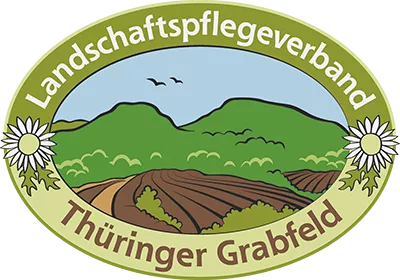General information
RDP Priority
- P6. Social inclusion and local development
RDP Focus Area
- 6B: Local development
RDP Measure
- M19: LEADER/CLLD
Beneficiary type
- Local association
Summary
The little owl (Athene noctua) is considered a flagship species of certain landscapes but populations are dropping or have gone extinct throughout large parts of central Europe. This reduction in numbers began in southern Thuringia in the 1970s, and the species disappeared entirely in the 1980s.
After initial activities by the landscaping association, two reintroduction projects were carried out by Thüringer Grabfeld e.V. Landscape Conservation Organisation in 2012-2015 and 2016-2018, with the second project building on the success of the first. Their goal was to develop a stable little owl population in southern Thuringia by doubling breeding pairs by the end of the project from an estimated two in 2007 to five. In addition, the project aimed to identify additional habitats and optimise them for reintroduction.
Results
- The little owl's habitat was restored and protected.
- The little owl has been found in 11 areas compared to eight during the previous reintroduction project.
- The public was informed about nature conservation and gained access to additional knowledge.

Promoter
Thüringer Grabfeld e.V. landscape conservation organisation
Funding
RDP support: 61 688 (EUR)
Resources
Documents
Good Practice Report - Supporting repopulation of the little owl in Grabfeld Thuringia
(PDF – 4.55 MB)
Context
The little owl (Athene noctua) was originally widely distributed throughout Germany. However, numbers have dropped significantly in recent decades in many parts of the country, and the species has even disappeared from some regions. It is classified on Germany’s red list as 'highly endangered' and 'in danger of extinction' on Thuringia’s red list. The primary cause for the drop in the little owl population has been, and remains, habitat destruction due to deforestation of orchard meadows and old, hollow trees, as well as changes in land usage.
The little owl was rediscovered in the Grabfeld region in 2007. At that time, it was threatened with extinction in Thuringia. Ornithologists placed brooding tubes in some areas of Grabfeld, which were used by the birds after just a few years. The Thüringer Grabfeld e.V. landscaping organisation supported the effort with its own capacities. This was the impetus for the first reintroduction project in 2012. A follow-up project was implemented from 2016-2018. Land users, landowners, ornithologists, stakeholders, and university and secondary school students were involved.
Objectives
This project aimed to repopulate the little owl in the region and to improve and restore the little owl's habitat. With the involvement of habitat users and owners and through networking, the project also sought to raise public awareness about this very rare species.
Activities
Project activities involved:
- Identifying suitable areas and obtaining usage authorisations and permits for repopulation actions.
- Maintaining and caring for old fruit trees and willow trees (380 fruit trees and 60 willow trees).
- Planting new tall fruit trees (150 trees).
- Clearing bushy orchard meadows and organising their use (3.5 hectares).
- Placing artificial nesting aids (30 new brooding tubes and 20 old brooding tubes replaced).
- Annual brooding checks.
- Reviewing all landscape conservation actions.
- Organising inspections with ornithologists.
- Assessing project progress, annual GIS-supported documentation of the little owl population and creating maps.
- Delivering public relations work.
- Developing a hand-illustrated storybook for children about the life of a little owl.
- Developing a registry of willow trees.
- Advising master's, bachelor’s and seminar theses as part of academic involvement in the project.
- Developing publications on the scientific results and on project implementation for specialist journals.
Agreements on mowing times were concluded with area owners and farmers. If funds are available, they receive financial support for any harvest losses and additional expenses.
Fruit tree owners received support for tree care and planting. All tree care and planting were handled by the project, with owners incurring no costs.
The project was initiated by two ornithologists, the landscaping association, the Lower Nature Conservation Authority and through close contact with Lower Franconia, the area where the first Thuringia little owl originated. The following partners were added over time:
- ornithologists from the states of Bavaria, Hesse and Brandenburg. Along with them, Thüringer Ornithologen e. V., Naturschutzbund (NABU), Bund für Umwelt und Naturschutz (BUND) and Landesvogelbund (LBV);
- land users, area owners and the Thuringia State Office for Agriculture and Rural Areas, the Cultural Landscape Programme (KULAP) and the Natural Landscape Programme (NALAP);
- mayors from nearby communities;
- social institutions for services; and
- volunteers.
Main results
- The little owl's habitat was restored and protected.
- The little owl has been found in 11 areas compared to eight areas during a previous reintroduction project.
- Eight successful broods and 16 juvenile little owls were recorded.
- The public was informed about nature conservation and gained access to additional knowledge.
- A register of willow trees was developed where 1 100 willow trees were digitised and described.
- Other species of birds also benefit from actions taken to help the little owl, such as the wryneck, grey-headed woodpecker, green woodpecker, redstart, cuckoo, red-backed shrike and whitethroat.
Key lessons
- Discuss the content of the project with everyone involved (official agencies, responsible authorities, owners, users and volunteers) before making adjustments.
- Patience, endurance and stamina are essential with so many participants and so many different interests, as well as with project goals dependent on factors like weather that are outside the project management's control.
“The spread of the species over the last six years shows that our efforts were effective. A species that was almost extinct in Thuringia has now returned and will hopefully continue to spread in the coming years. The little owl is charismatic, storied, and likeable, an ideal ambassador for species conservation.”
